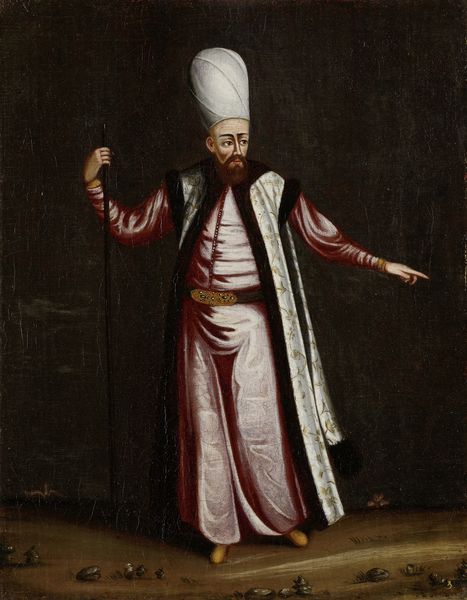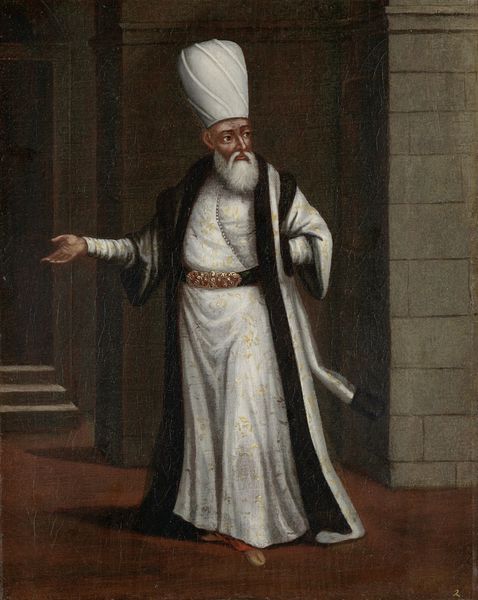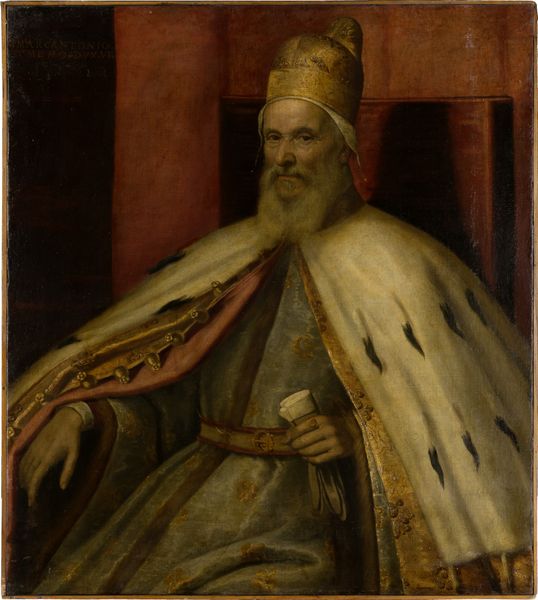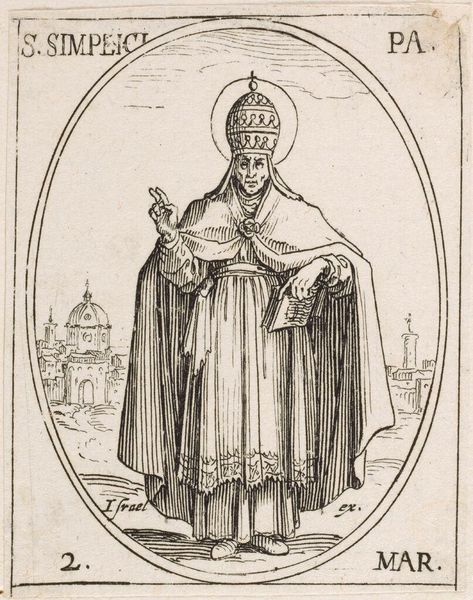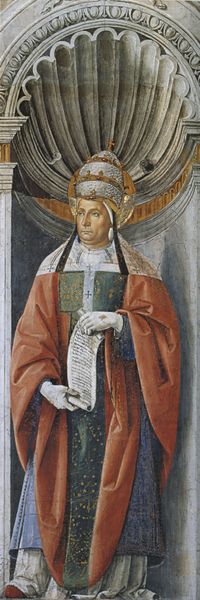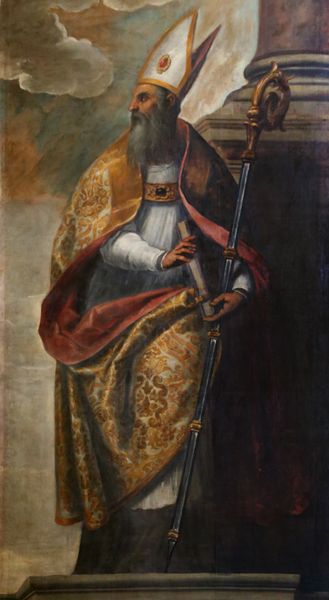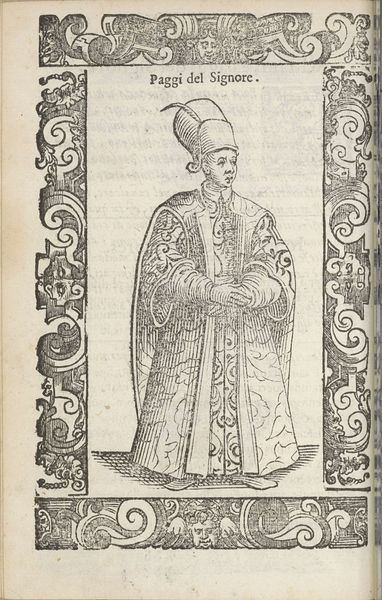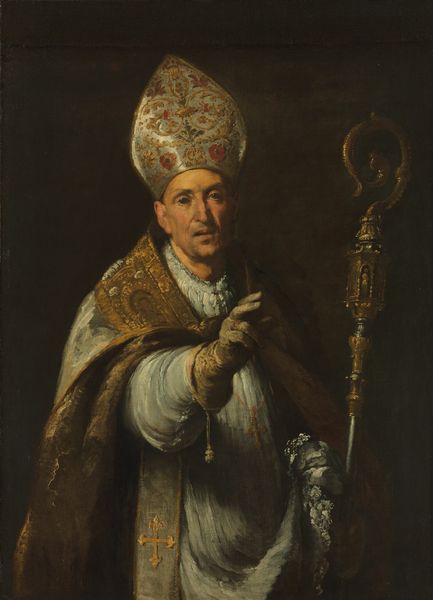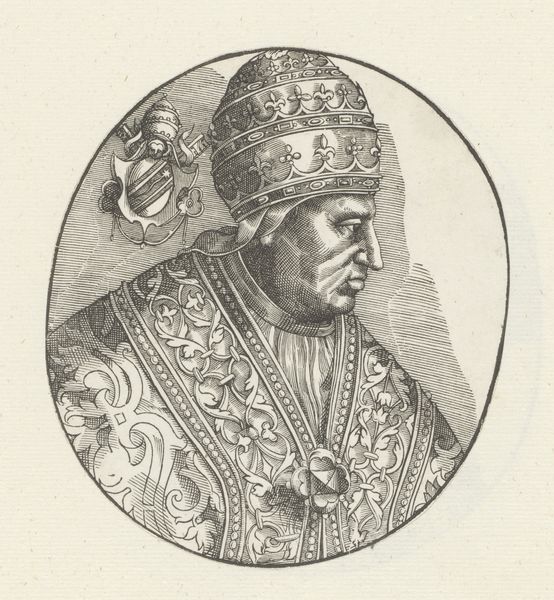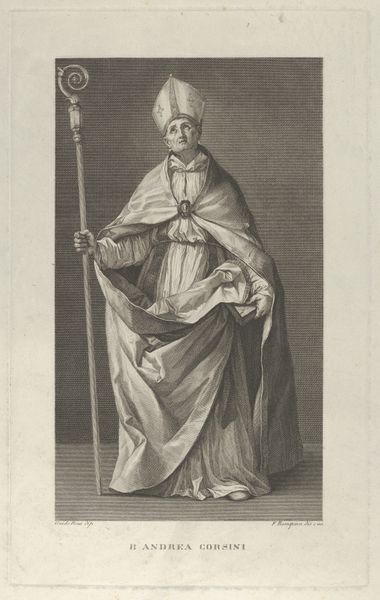
Dimensions: height 39.5 cm, width 31.5 cm
Copyright: Rijks Museum: Open Domain
Editor: Here we have "The Capon Aghassi, Chief of the White Eunuchs of the Sultan" painted between 1700 and 1737 by Jean Baptiste Vanmour. It appears to be a watercolor portrait. The detail in the clothing is quite striking! What draws your attention most about this piece? Curator: For me, the fascinating element lies in understanding the materials used to produce such imagery and how they relate to the socio-economic context of its creation. The rich colours—the deep red of the robe, the silver threads of the overcoat—these weren’t just aesthetic choices. They were statements of power, achievable through very specific material means. Editor: That's interesting, I hadn't considered the materials themselves. So, the access to these pigments and fabrics, that says something about the patron, right? Curator: Precisely. And the labor involved in creating this image. Who made the pigments? Who wove the fabrics? These are all part of the artwork's story. The very act of representation through such lavish materials reinforced hierarchies and social strata. Think about the contrast between the figure's ornate clothing and the relatively sparse background. Does that suggest anything about the priorities of production? Editor: It seems to isolate him, almost making him an object of display…it makes me think about the consumption of art and materials, not just their production. Curator: Exactly. This wasn’t just about seeing; it was about possessing, consuming, and showcasing power through material culture. It's also crucial to remember the West's fascination with the "Orient." Editor: I hadn't thought of this painting as an example of Orientalism, but I see what you mean now, thinking about how materials played into that power dynamic as well. Curator: Considering Vanmour’s access to the Ottoman court, we should reflect on his methods, motivations, and the impact of cultural translation within a power structure that had distinct methods of obtaining goods and distributing wealth. Food for thought! Editor: Definitely food for thought. I'll certainly look at art with an eye toward materials and labor from now on!
Comments
No comments
Be the first to comment and join the conversation on the ultimate creative platform.
